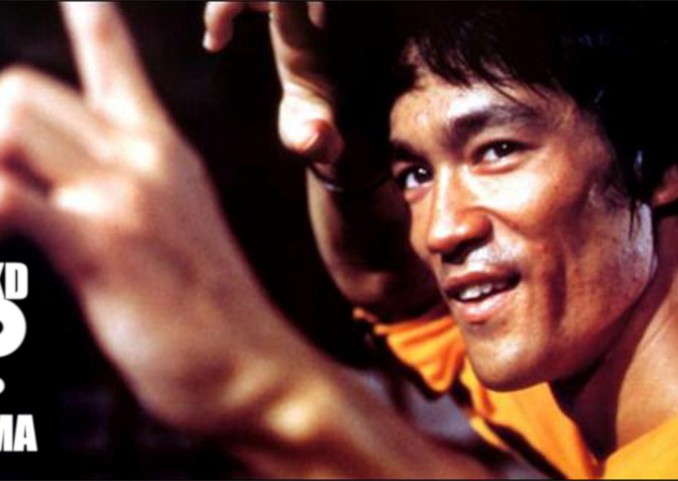
It’s time to talk about a legend. Bruce Lee was one of the first martial artists to train in multiple styles. His goal was to figure out what worked best from each art. He absorbed what was useful, discarded what was useless, and added what was uniquely his own.
Bruce Lee developed Jeet Kune Do for street fighting, but many of the techniques have proven highly effective in MMA.
The first is a technique that took a long time to catch on. But once it did, it proved highly effective.
Bruce Lee’s quick advance sidekick to the knee follows Lee’s principle of longest weapon to nearest target, and is used primarily by long range fighters like Conor McGregor, who want to keep the distance and dart in and out.
Speaking of kicks to the leg, the oblique kick was another of Bruce Lee’s favorites. Only becoming prominent within the last few years and used by the likes of Jon Jones, the oblique kick stops fighters as they come in and wears down their legs.
This kick was a staple a Savate, an old French kickboxing style Lee found valuable. Apparently, they used to compete with steel tips boots and therefor favored hitting with the toes, but in his book, the Toa of JKD, Bruce advises striking with your heel.
Next up is trapping. This is where you catch your opponent’s punch with a parry, and then hold his hand down as you strike with your other hand. This technique simultaneously takes away one of your opponents weapons and creates an opening for you.
Recently, Tony Furguson and Anderson Silva have been experimenting with this aspect of Wing Chun. Wing Chun was Lee’s original style, and while he discarded much of it, he found trapping to be highly useful. This technique is still in it infancy in MMA, so it will be really interesting to see if it’s further developed.
Last but not least, lets look at Bruce Lee’s approach to grappling. By the time he had passed, Bruce Lee had a thorough knowledge of grappling, but had yet to put his own unique spin on it. But hidden in the grappling section of Toa of Jeet Kune Do is the combination that would become the go to standard for most takedowns: The jab and shoot.
Almost causally drawn in, this technique would become the most used setup for wrestlers, and was mastered by the likes of GSP. He would use it to distract his opponents and raise their guard, giving them less of a chance of stifling his takedowns.
It would have been fascinating to see what Lee’s unique take on grappling developed into, but we can guess by his drawings that there would have been a lot of heel hooks, eye gauges, and strikes to the groin.
Lee knew that no one way or style could be right all of the time. But as it turns out, his style and his philosophy are still relevant to this day.
Until next time, this has been David Christian from the Modern Martial Artist, wishing you, happy training.
Books by David Christian of The Modern Martial Artist
Power of the Pros: https://www.modernmartialartist.com/downloads/power-of-the-pros/
Footwork Wins Fights: https://www.modernmartialartist.com/downloads/footwork-wins-fights/
Everything Boxing, Kickingboxing & MMA
Youtube: https://www.youtube.com/c/themodernmartialartist
Patreon: https://www.patreon.com/modernmartialartist

Nice video. I read Tao of Jeet Kune Do when i was in high school.
Thanks for the article and I would have to agree, it would be interesting to know how Bruce Lee would have evolved had he been able to stay with the world much longer than he did.